Wet Dandruff – What Is It And How To Treat It?
Natural remedies that can help rid your scalp of the stubborn, greasy, sticky layer of dead cells.
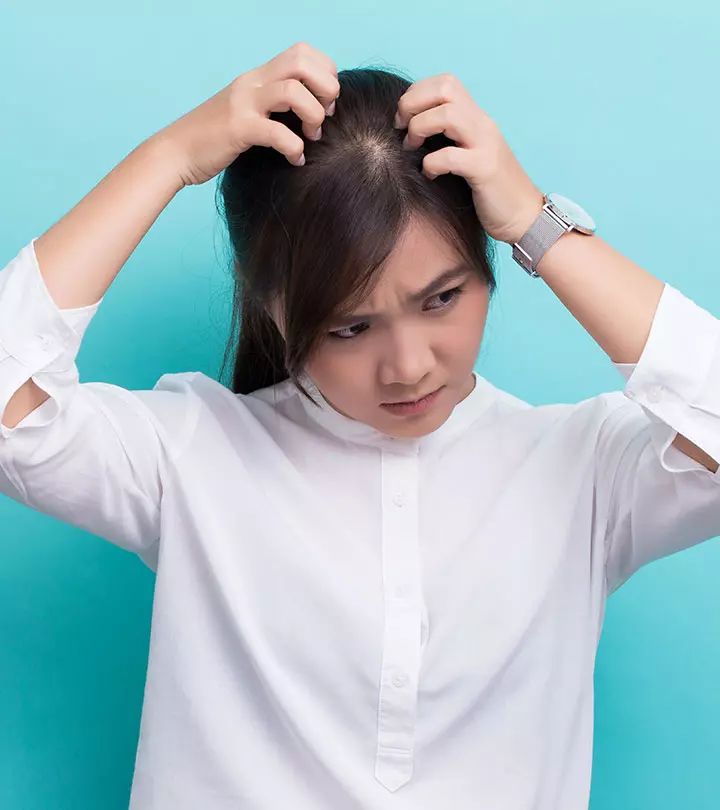
Image: Shutterstock
If you have not heard of wet dandruff, here’s the 411! It is a type of dandruff, a common scalp condition characterized by a slick buildup of dead skin cells resulting from excessive oil production on your scalp. Dry dandruff is usually milder than wet dandruff. This type of dandruff affects most people with oily scalps, and the flakes stick to the hair strands and are larger than the flakes you see in dry dandruff. However, the right dandruff treatment solutions can help you eliminate those itchy flakes. Here, we have discussed what causes wet dandruff, how to get rid of it, and much more. So, keep reading and begin your wet dandruff treatment today!
In This Article
What Is Wet Dandruff?
Located underneath your scalp are sebaceous glandsi Oil-secreting glands located just under the surface of the skin that open into hair follicles. It helps keep the skin lubricated. that serve the primary function of producing the natural oil sebum. This sebum keeps your hair and scalp moisturized and prevents them from getting dehydrated. It also serves the purpose of reducing frizz and preventing the signs of aging from appearing.
The problem begins when the sebaceous glands start working in overdrive and producing sebum in excess quantities. The excess sebum starts building up on your scalp and makes it sticky. It starts attracting and clinging onto dirt and dead skin cells, thus forming dandruff (1). Since sebum is moist, it forms a damp layer on your scalp. This type of dandruff is referred to as wet dandruff or oily dandruff. Sometimes, it may feel like your scalp is leaking out some sticky liquid and showing symptoms of other conditions. Dr. Anna Chacon, MD, FAAD, a double board-certified dermatologist, says, “It can mimic the symptoms of seborrheic dermatitis, scalp psoriasis, and eczema.”
Key Takeaways
- While dry dandruff is white and flaky, wet dandruff is yellow and sticky.
- Wet dandruff can develop due to fungal overgrowth and hyperactive oil glands.
- You can use aloe vera, baking soda, or apple cider vinegar to combat fungal growth.
- Applying fenugreek paste twice a week helps combat wet dandruff.
What Are The Causes Of Wet Dandruff?
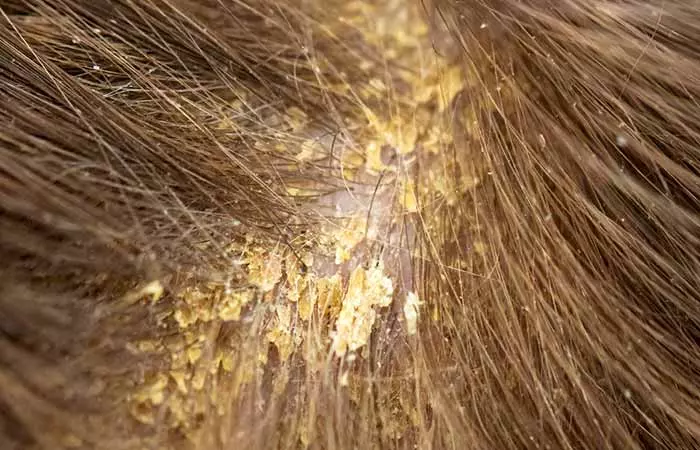
I know what you’re wondering – why do your sebaceous glands suddenly start acting crazy and producing extra sebum? Well, the most common causes are hormonal changes caused by puberty or stress (1). Another major reason could be irregular and infrequent shampooing habits that lead to insufficient cleansing of your scalp and the subsequent buildup of dirt and dead skin cells causing wet scalp.
How Does Wet Dandruff Occur On Eyebrows And Eyelashes?
Sebaceous glands are located all over your body. The only other areas that have a thick concentration of hair besides your scalp and are exposed to the environment are your eyebrows and eyelashes. Henceforth, the sebaceous glands in those areas can also overproduce sebum and cause wet dandruff (1).
Dry Dandruff Vs. Wet Dandruff
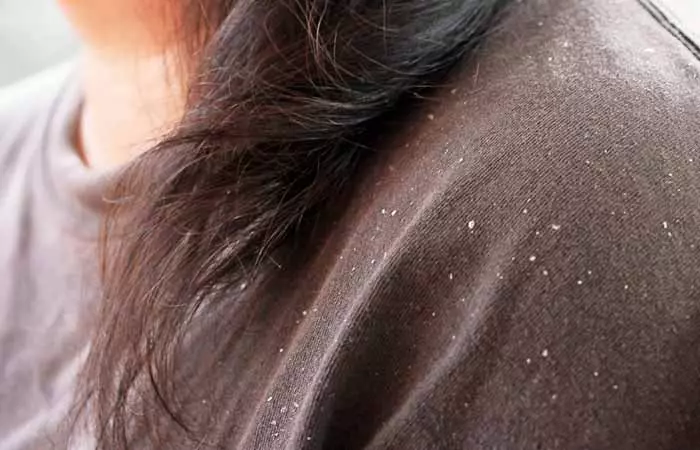
There are two types of dandruff: dry and wet. Dry dandruff typically consists of small, white flakes that fall off your scalp pretty easily with the slightest movement. Wet dandruff, on the contrary, appears as large, yellow, sticky dandruff flakes that clump together and cling onto your hair shafts. They do not fall off easily. Usually, the scalp feels wet after scratching.
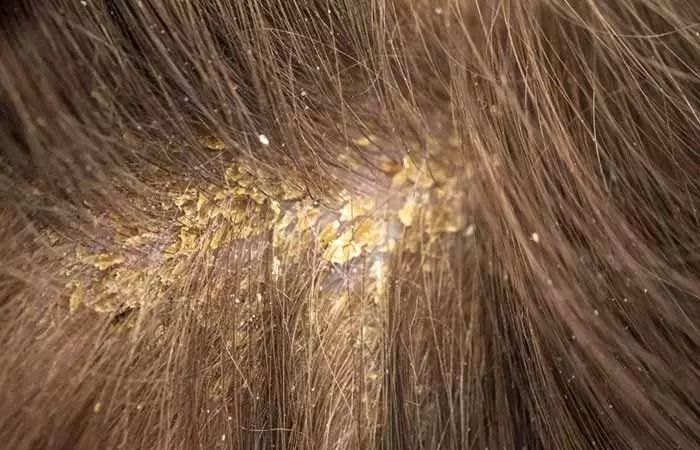
Several anecdotal reports claim that dry dandruff does not cause redness or irritation on the scalp and tends to disappear during the summer months. However, oily or wet dandruff is a long-lasting condition that causes severe itching and inflammation on the scalp. This type of dandruff is also accompanied by a wet feeling on the scalp.
A study examined the scalp conditions of 54 women with dandruff and 30 women with healthy scalps. It found that scalps with both dry and oily dandruff have lower moisture, higher pH, and increased water loss compared to healthy scalps. Dry dandruff has the least moisture, while oily dandruff shows more inflammation and changes in skin cell structures. An enzyme linked to skin shedding (KLK5) is higher in both types, especially in oily dandruff. Since dry and oily dandruff have different causes, they need different treatments. Dry dandruff needs more hydration, while oily dandruff may require solutions to control oil and reduce inflammation (2).
Since wet dandruff is a more long-lasting condition and causes extreme itching, you need to treat it with natural remedies that specifically target these problems. Here are a few things that you can try out to learn how to get rid of dandruff.
How To Get Dandruff Out Of Wet Hair
Greasy hair and itchy scalp are some of the first signs of wet dandruff. Getting rid of it might sound tricky, but it’s possible. If you are wondering how to treat chronic dandruff, listed below are a few home remedies that may help you see a reduction in the symptoms and bring you relief.
1. Aloe Vera Gel
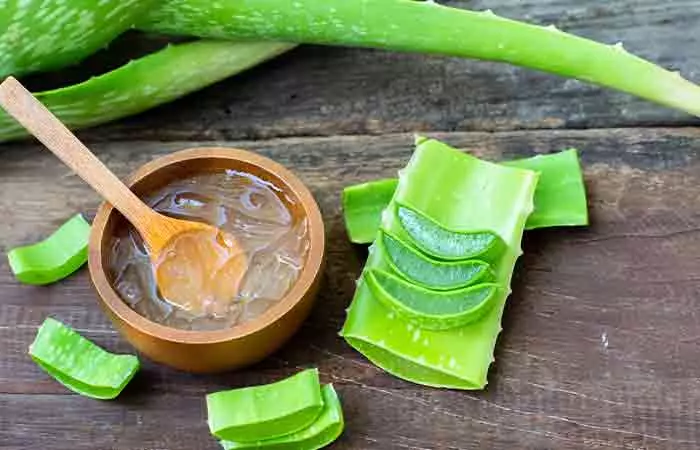
Aloe vera contains cleansing enzymesi Proteins in the body that help increase metabolism by accelerating chemical reactions. They are essential for muscle and nerve growth. like oxidase, amylase, and catalase and vitamins B, C, and E. It also contains glycoproteinsi A type of protein linked to amino acids and carbohydrates that aids cell-to-cell attachment and tissue formation. that reduce inflammation and soothe itchiness (3). Therefore, it may help in getting rid of the dead skin cells, oil buildup, and fatty deposits clogging your hair follicles and causing wet dandruff.
What You Need
- 3-4 tablespoons aloe vera gel
- Towel
- Hot water
What To Do
- Apply the aloe vera gel all over your scalp.
- Soak the towel in hot water and wring out the excess water.
- Wrap this hot, damp towel around your head and leave it on for half an hour.
- Wash off the aloe vera gel with a mild shampoo.
- Follow this routine thrice a week.
2. Apple Cider Vinegar
Apple cider vinegar acts as an excellent wet dandruff remedy. This could be because of its natural antifungal properties that make it difficult for the dandruff-causing fungus to grow. It contains acetic acid, which helps clean the scalp by removing residues from other hair products as well. It also conditions the hair, making it more silky, soft, and shiny (4). This deep-cleansing property may be especially useful for managing wet dandruff by keeping the scalp fresh and balanced.
What You Need
- ½ cup apple cider vinegar
What To Do
- Pour the apple cider vinegar all over your scalp and gently massage it in.
- Leave it on for 10 minutes.
- Wash it off with a mild shampoo and condition your hair as normal.
- Follow this routine once a week.
3. Lemon Juice And Amla Juice
Lemon juice and amla juice work in sync to remove the wet dandruff and accumulated oil on your scalp. The citric acid content of the lemon juice acts as an antimicrobiali An agent that helps kill and prevent the spread of microorganisms, such as bacteria, fungi, algae, and protozoa. agent (5). This can help get rid of the fungus causing the wet dandruff. Amla’s rich tannin content, along with iron and antioxidants, helps protect hair follicles from dandruff-related damage. Its vitamin C content, paired with its anti-inflammatory and antibacterial properties, further helps prevent dandruff formation and keeps the scalp healthy (6).
What You Need
- 2 tablespoons lemon juice
- 2 tablespoons amla juice
- Cotton ball
What To Do
- Combine the juices in a bowl.
- Use a cotton ball to apply this mixture all over your scalp.
- Leave it on for 30 minutes before washing it off with a mild shampoo.
- Follow this routine twice a week.
4. Baking Soda
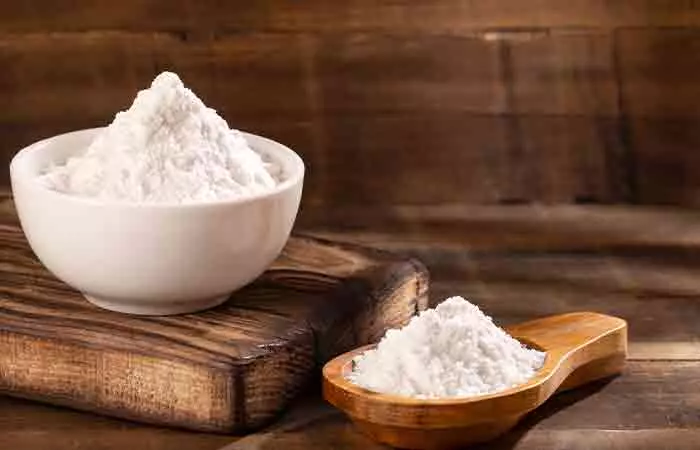
Baking soda may sound like an odd choice for treating wet dandruff, but it could actually work well in this aspect. A study tested the antifungal properties of baking soda on different common fungi that cause skin and nail infections. It found that baking soda can stop the growth of many fungal strains, including yeasts (7). Since dandruff is often caused by a yeast-like fungus (Malassezia), baking soda might help with dandruff. However, the study did not specifically test Malassezia, so its effectiveness for dandruff is uncertain. Anecdotal evidence also suggests that baking soda can help absorb excess oil from the scalp, which may help control oiliness and manage wet dandruff.
What You Need
- 3 tablespoons baking soda
- Water
What To Do
- Mix some water with the baking soda.
- Apply this paste all over your scalp and leave it on for 10 minutes.
- Wash it off with water and a mild shampoo.
- Follow this routine once a week.
5. Fenugreek Seeds
Fenugreek seeds possess antibacterial and antifungal properties that can potentially fight the infections that could be causing and aggravating the wet dandruff condition. A study published in the International Journal of Nursing Education and Research tested whether fenugreek seed paste can help reduce dandruff in adolescent girls. A dermatologist examined their scalps before and after applying fenugreek seed paste for six sessions. The results showed a significant decrease in dandruff levels after treatment (8).
What You Need
- 2 tablespoons fenugreek seeds
What To Do
- Soak the fenugreek seeds in water overnight.
- Grind them into a smooth paste the next morning.
- Apply this paste all over your scalp and leave it on for 30 minutes.
- Wash it off with a mild shampoo.
- Follow this routine twice a week.
6. Arnica
Arnica is derived from the dried flowers of Arnica montana or other arnica species. This herbal remedy can help treat various forms of dermatitis, including seborrheic dermatitis (9). Its anti-inflammatory properties may help soothe the skin and relieve itching and inflammation.
What You Need
- 1 tablespoon of arnica extract
- ½ liter of water
What To Do
- Mix the arnica extract with water.
- Apply the mixture to the scalp.
- Massage the scalp for about 3 minutes.
- Leave it on for about 20 minutes.
- Wash it off with lukewarm water.
- Follow it up with shampoo and conditioner.
These are some of the best home remedies for wet dandruff. Do note that these remedies may or may not work for everyone, and in some cases, they can cause skin irritation or allergies, especially for those with a sensitive scalp. It is best to do a patch test before applying and practice caution. If you experience persistent irritation or reactions, stop using it and consult a doctor. Also, if you observe no significant improvement, you may need professional medical treatment for better results. Continue reading to learn more about it.
Medical Treatments For Wet Dandruff
Wet dandruff, caused by excess oil production, can be medically treated in the following ways (10):
- Antifungal Shampoos: Contain ingredients like ketoconazole, ciclopirox, or miconazole to reduce fungal growth.
- Anti-Inflammatory Treatments: Contain mild corticosteroids to help soothe scalp irritation and inflammation.
- Keratolytic Treatments: Comprise medication with ingredients like propylene glycol to help exfoliate and reduce flaking.
- Oral Antifungal Medications: Include products like terbinafine or itraconazole to treat severe cases of fungal and yeast infections.
- UVB Phototherapy: Involves exposing the affected scalp area to artifical UVB light for a monitored period to manage dandruff and inflammatory conditions.
- Gentle Antifungal Baby Shampoos: Contain emollients or antifungal and anti-inflammatory ingredients like piroctone olamine and bisabolol for gentle treatment for children with wet dandruff.
Now that you know the top ways to get rid of wet dandruff, take a look at some preventive measures in the next section as well. Keep reading to learn more.
Preventive Tips For Wet Dandruff
Here are some ways you can prevent wet dandruff from forming on your scalp right from the get go, from simple changes in one’s hair care routine to avoiding certain products.
- Use a mild, anti-dandruff shampoo to keep your scalp clean and reduce excess oil buildup.
- Dry your hair thoroughly after washing to prevent moisture from encouraging fungal growth.
- Limit the use of heavy gels, sprays, or oils that trap moisture and worsen dandruff.
- Eat foods rich in vitamins and minerals, especially zinc and vitamin B to support scalp health.
- Stress may worsen dandruff, so learn relaxation techniques like meditation or exercise to help reduce stress levels.
Infographic: How To Treat Wet Dandruff Naturally?
One of the main hair care issues that many individuals experience is dandruff. Dandruff can cause you problems at any time, no matter the season. Dandruff can develop no matter how much protection you give your hair. It is crucial to treat dandruff to prevent additional major hair issues, including hair loss, balding, and scalp infections. There is both wet and dry dandruff. Although dry dandruff is common, wet dandruff requires special care. Check out the infographic below to learn about natural ways to treat the wet dandruff. Illustration: StyleCraze Design Team

 Quick Tip
Quick TipWet dandruff occurs in people with oily scalp. When the sebaceous glands produce excess sebum, your scalp becomes sticky and attracts dirt and dead skin cells, resulting in dandruff. The symptoms can aggravate in humid environments. The two main reasons for the oily scalp are hormonal changes and irregular hair washing. These two can lead to wet or soggy dandruff issues. However, you can treat it through the methods discussed above. Following the remedies in this article may help you treat wet dandruff and cleanse your scalp. Consult your doctor if these do not work.
Frequently Asked Questions
What does it mean if you have yellow dandruff?
If you have yellow dandruff, it means that you have excess sebum production on your hair.
Is dandruff caused by puberty?
The hormonal changes that occur during puberty can cause dandruff.
Why do I have scabsi Crusty, protective coatings that form on the skin while healing from a skin injury like a cut or a wound. on my head?
The scabs on your head could be a result of the excessive itching and scratching that accompany wet dandruff.
Does wet dandruff cause hair loss?
Dandruff typically does not directly contribute to hair loss. But it may make your scalp itch. Scratching may harm your hair follicles, resulting in hair loss. Wet dandruff and hair loss might be connected as well. This is because various infections and conditions can result in dandruff and hair loss.
How long can dandruff last?
If you follow the right treatment, it should last between 15 and 30 days. But if it lasts beyond that and you still have dandruff, it may be time to visit the dermatologist.
References
Articles on StyleCraze are backed by verified information from peer-reviewed and academic research papers, reputed organizations, research institutions, and medical associations to ensure accuracy and relevance. Read our editorial policy to learn more.
- Seborrheic Dermatitis and Dandruff: A Comprehensive Review
https://www.ncbi.nlm.nih.gov/pmc/articles/PMC4852869/ - Biophysical characteristics of dandruff-affected scalp categorized on the basis of sebum levels
https://pubmed.ncbi.nlm.nih.gov/32757243/ - The Review on Properties of Aloe Vera in Healing of Cutaneous Wounds
https://www.ncbi.nlm.nih.gov/pmc/articles/PMC4452276/ - Preparation and Optimization of Garlic Oil/Apple Cider Vinegar Nanoemulsion Loaded with Minoxidil to Treat Alopecia
https://pmc.ncbi.nlm.nih.gov/articles/PMC8706394/ - Antimicrobial Activity of Different Aqueous Lemon Extracts
https://www.japsonline.com/admin/php/uploads/926_pdf.pdf - Preparation & Assessment of Poly-Herbal Anti-Dandruff Formulation
https://opendermatologyjournal.com/VOLUME/14/PAGE/22/FULLTEXT/ - Antifungal activity of sodium bicarbonate against fungal agents causing superficial infections
https://pubmed.ncbi.nlm.nih.gov/22991095/ - Effectiveness of Fenugreek Seed Paste on Dandruff among Adolescent Girls in Selected Women’s Hostel, Coimbatore
https://ijneronline.com/HTMLPaper.aspx?Journal=International%20Journal%20of%20Nursing%20Education%20and%20Research;PID=2014-2-2-13 - Herbal Treatment for Dermatologic Disorders
https://www.ncbi.nlm.nih.gov/books/NBK92761/ - An Overview of the Diagnosis and Management of Seborrheic Dermatitis
https://pmc.ncbi.nlm.nih.gov/articles/PMC9365318/
Read full bio of Dr. Vindhya L Veerula
- Dr. Anna Chacon, MD, FAAD, is a double board-certified dermatologist with over 7 years of experience. She has authored many peer-reviewed articles and managed clinical research studies during her fellowship. She completed her medical school in the PLME (Program of Liberal Medical Education) at Brown University.
 Dr. Anna Chacon, MD, FAAD, is a double board-certified dermatologist with over 7 years of experience. She has authored many peer-reviewed articles and managed clinical research studies during her fellowship. She completed her medical school in the PLME (Program of Liberal Medical Education) at Brown University.
Dr. Anna Chacon, MD, FAAD, is a double board-certified dermatologist with over 7 years of experience. She has authored many peer-reviewed articles and managed clinical research studies during her fellowship. She completed her medical school in the PLME (Program of Liberal Medical Education) at Brown University.
Read full bio of Arshiya Syeda
Read full bio of Ramona Sinha
Read full bio of Monomita Chakraborty







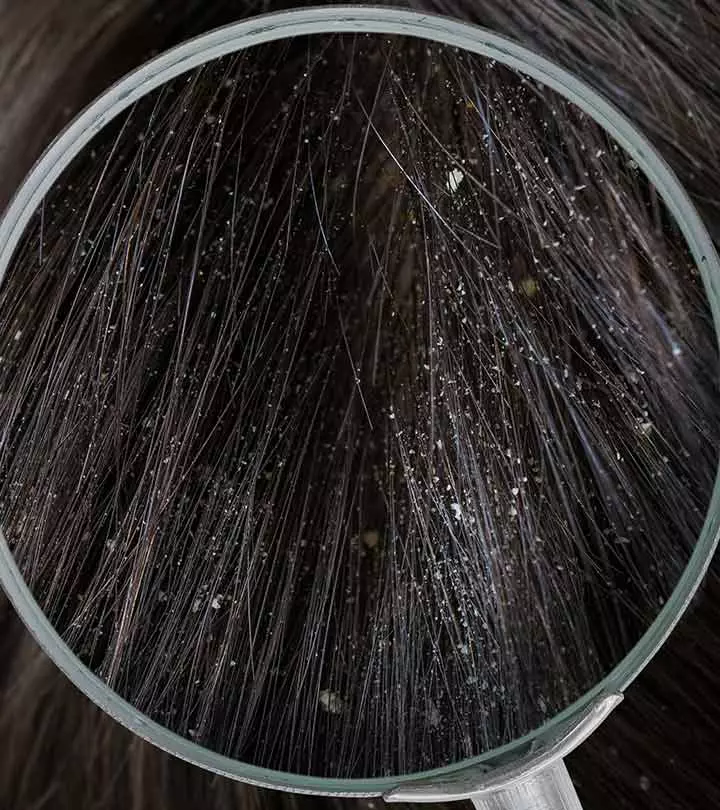
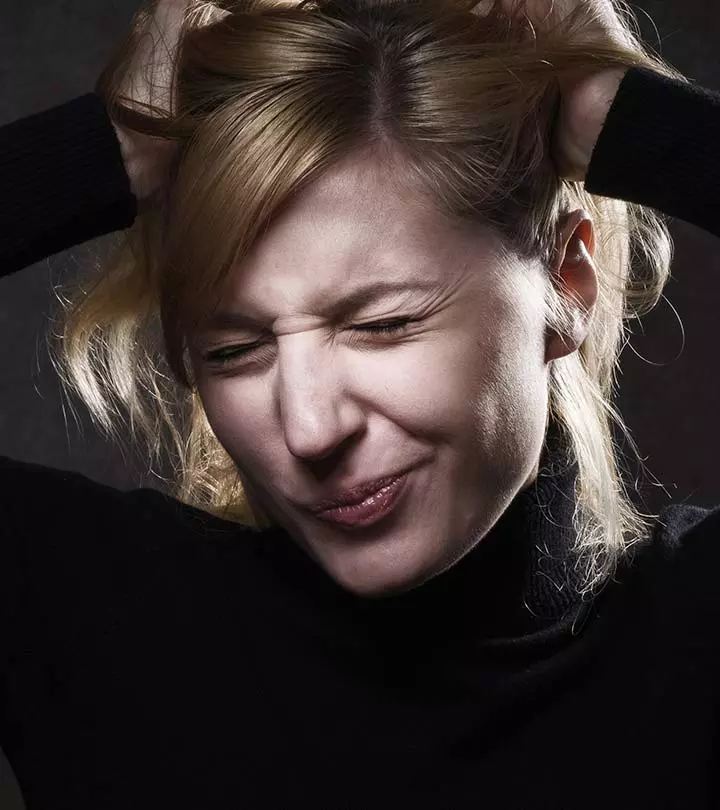
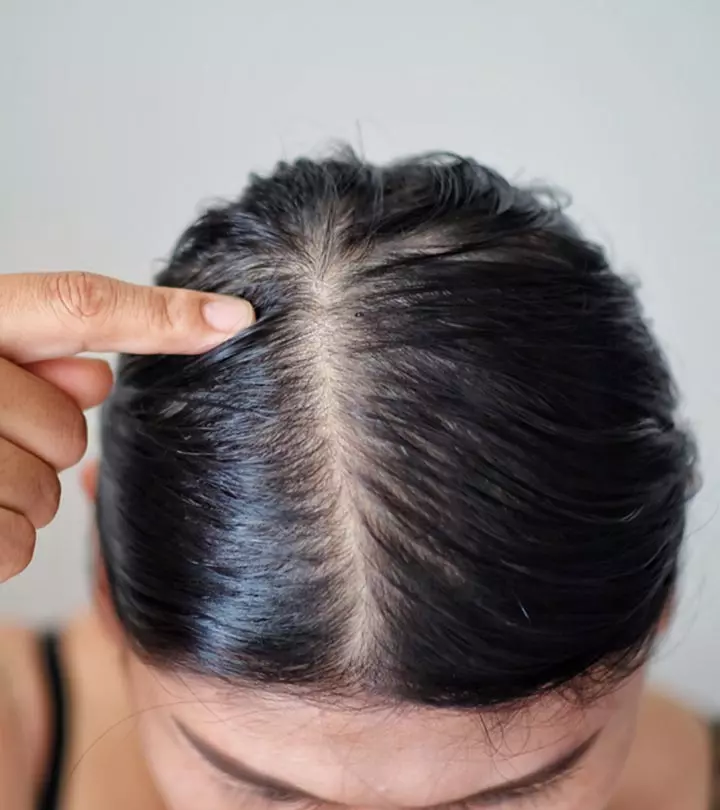
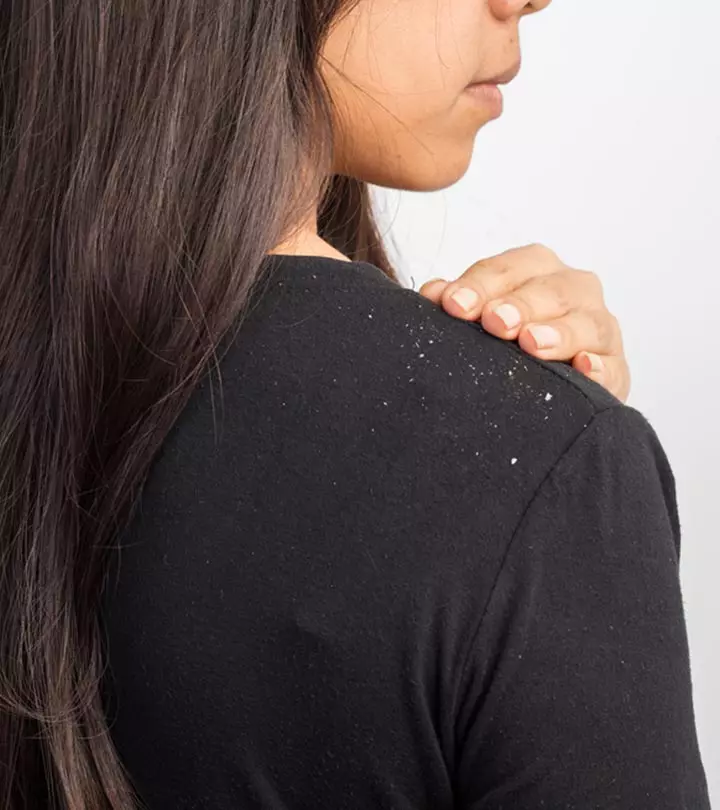
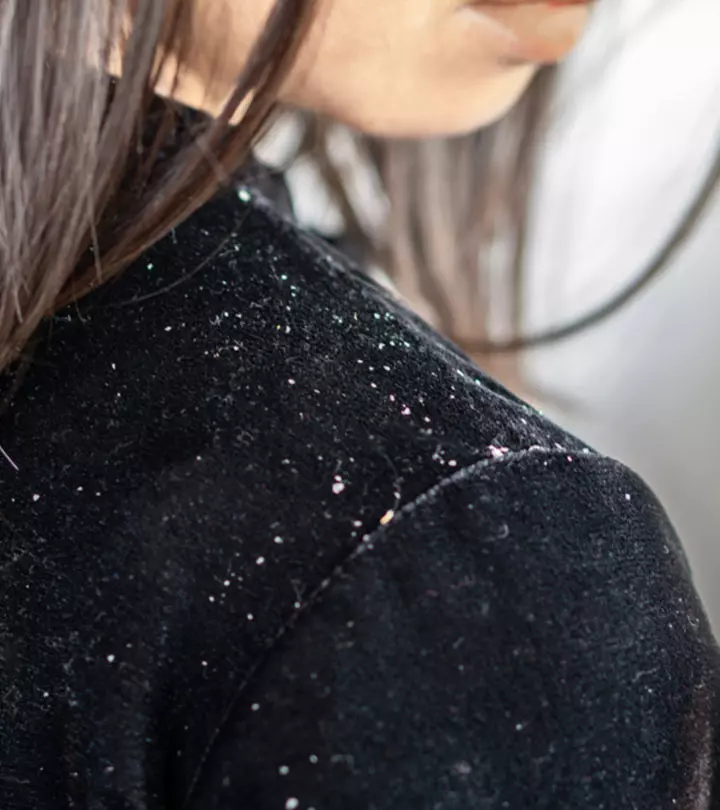
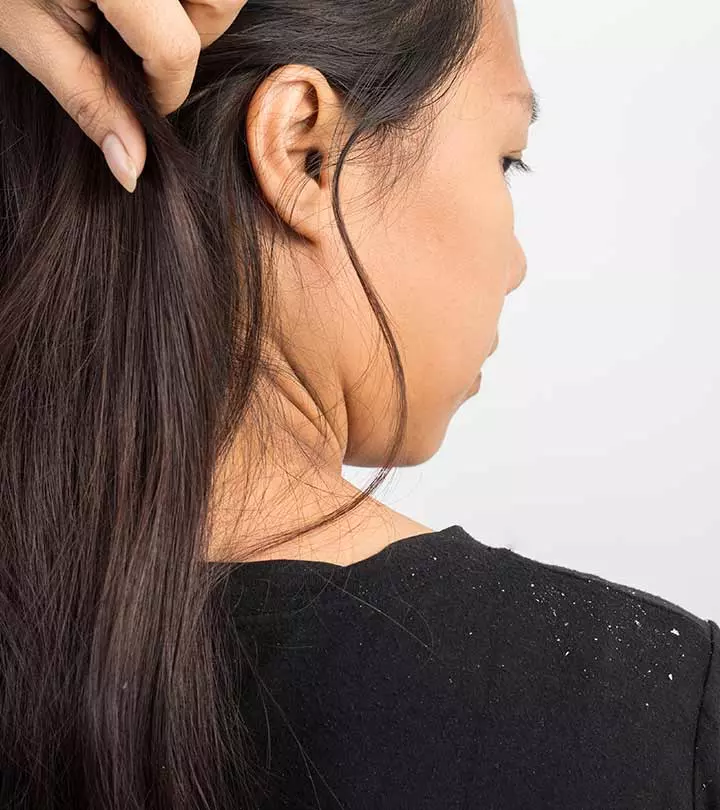
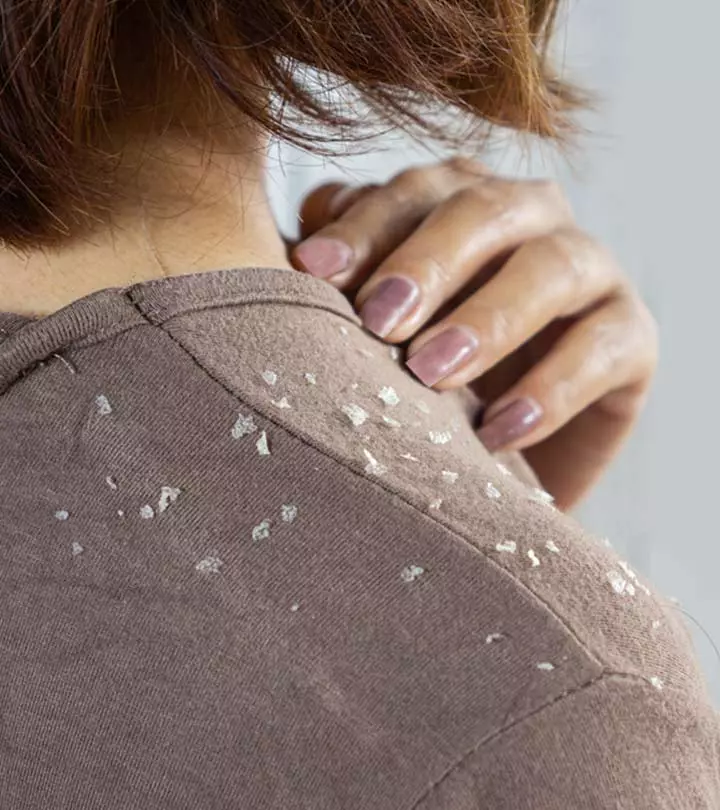


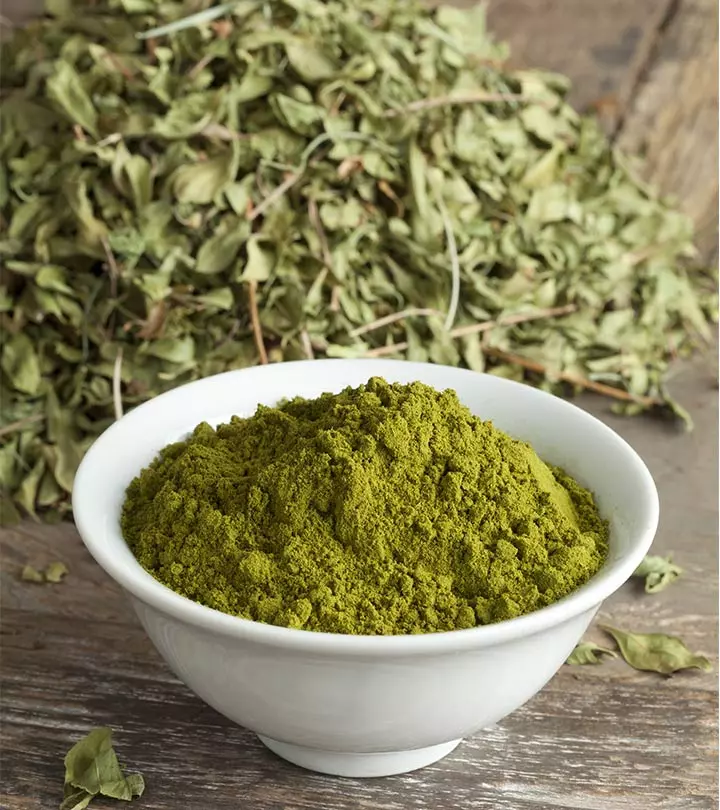
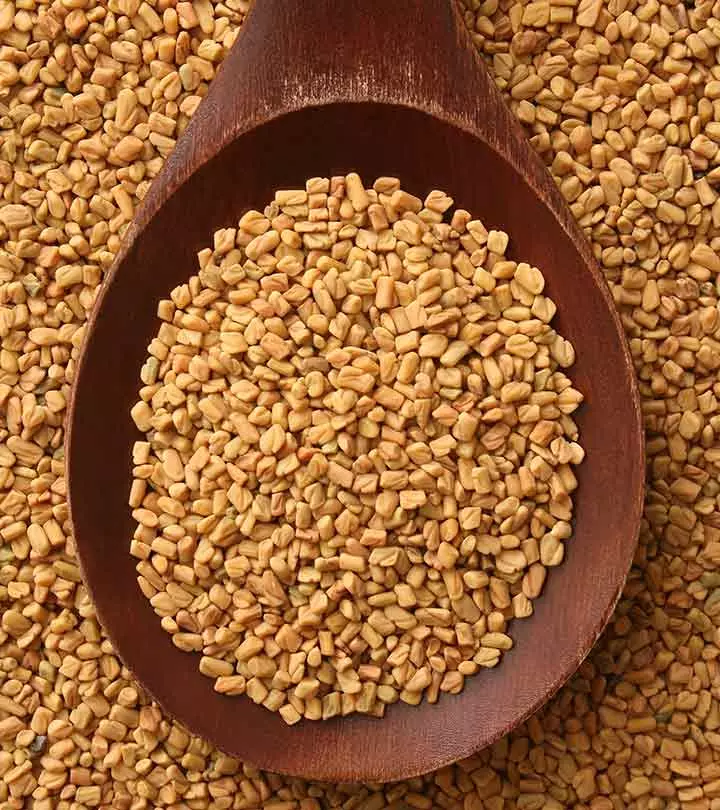
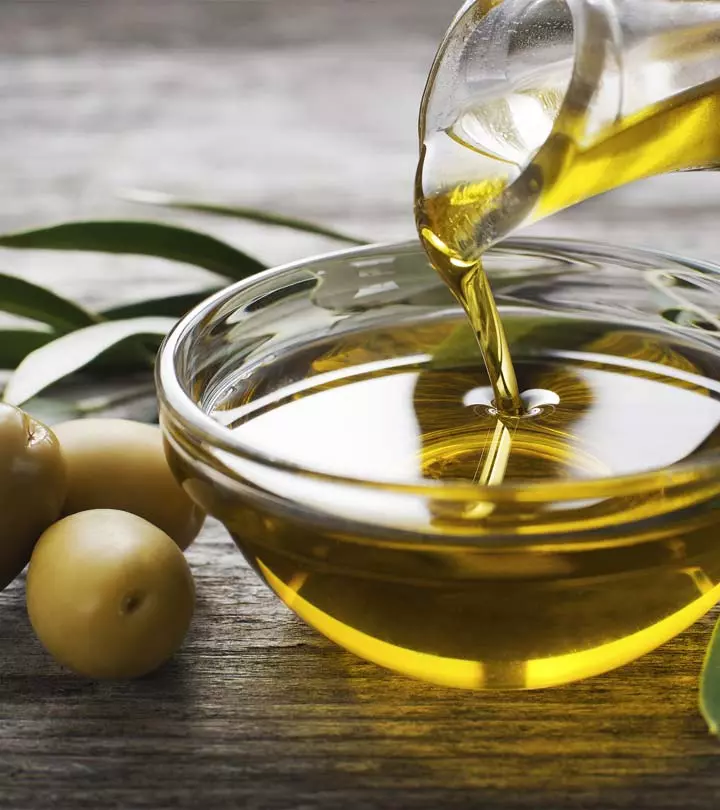
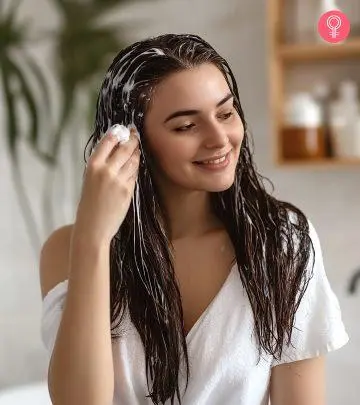
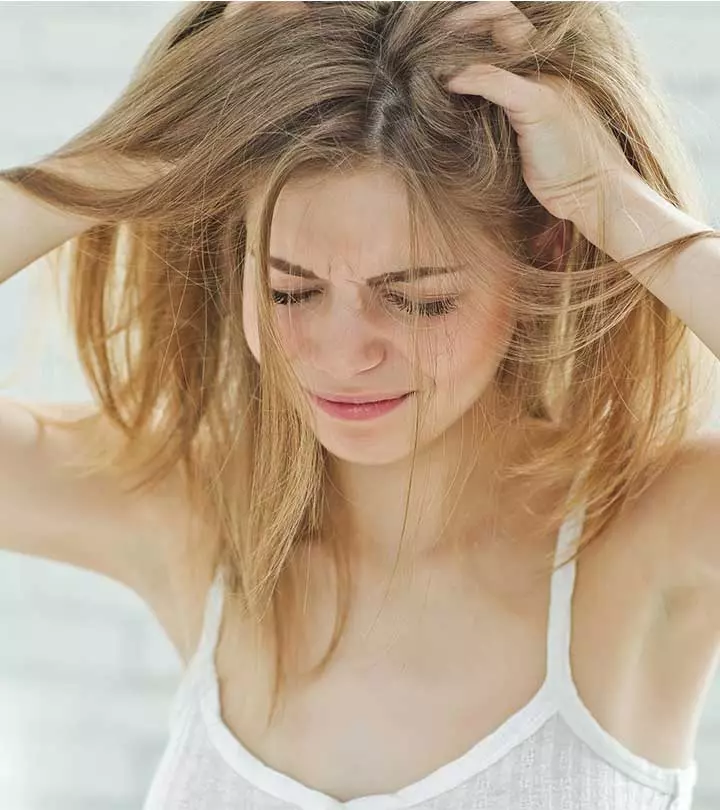
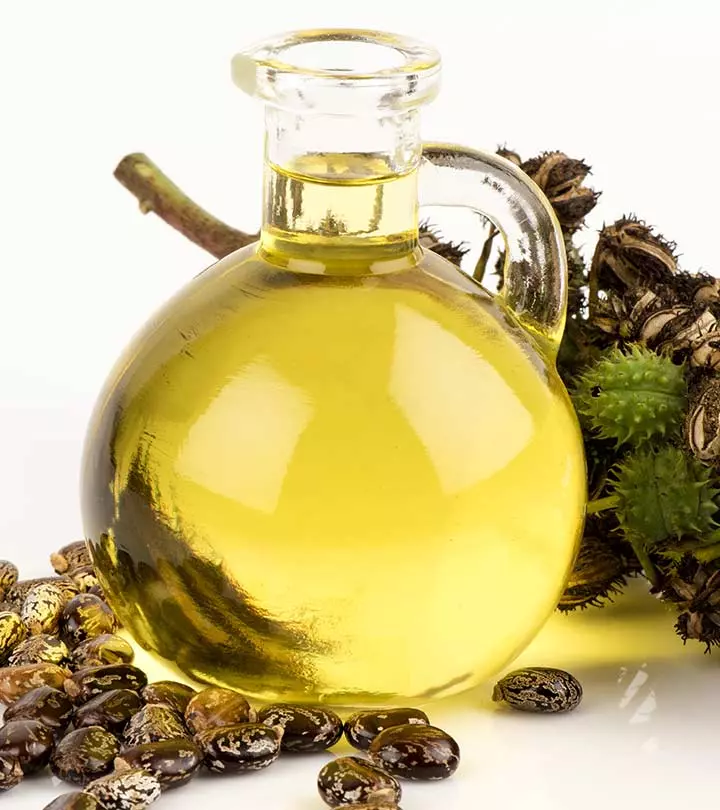
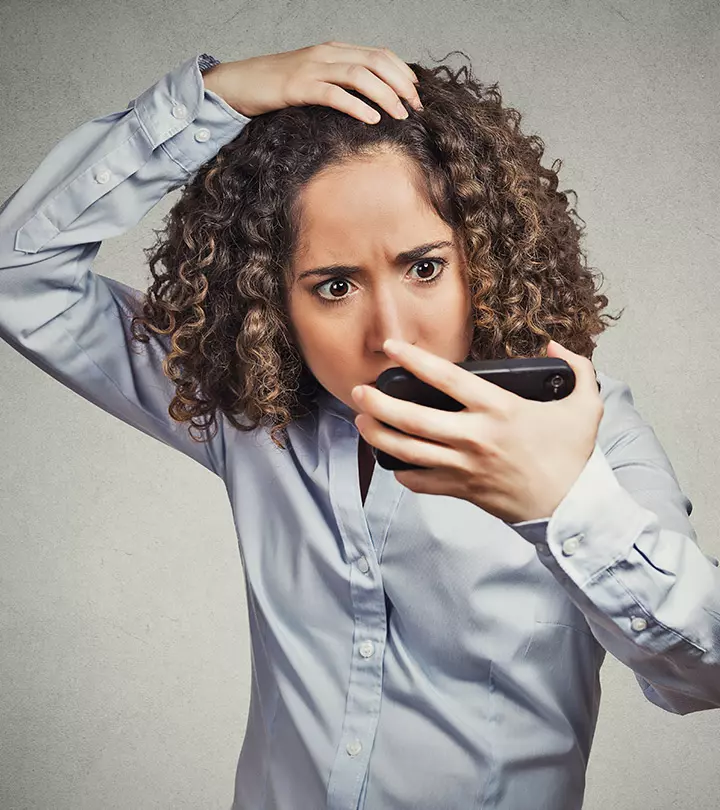

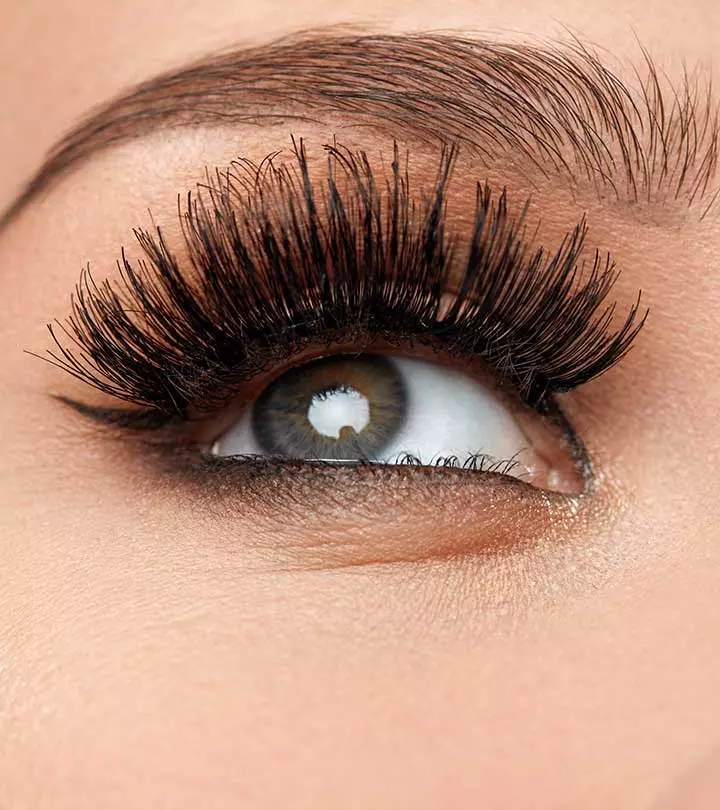
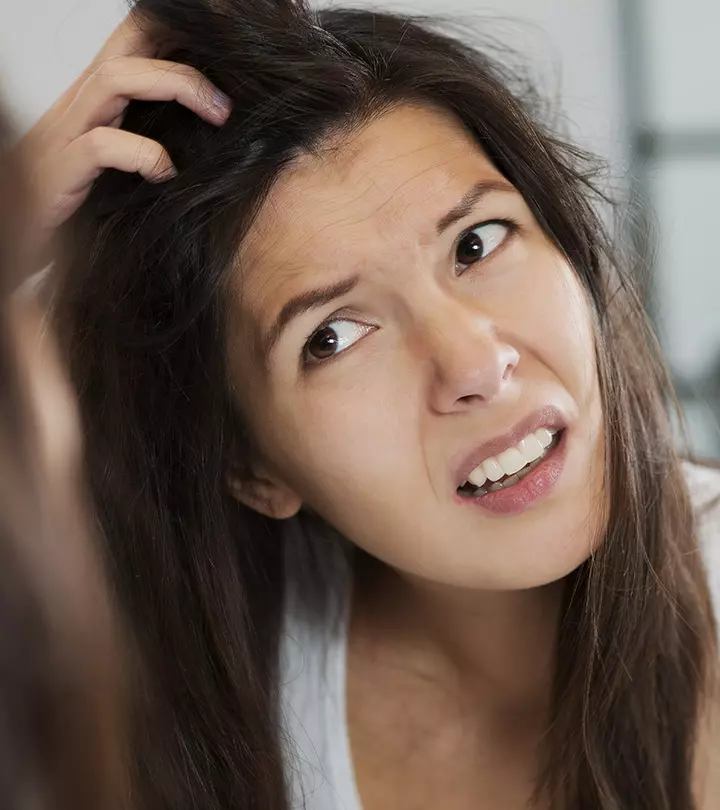
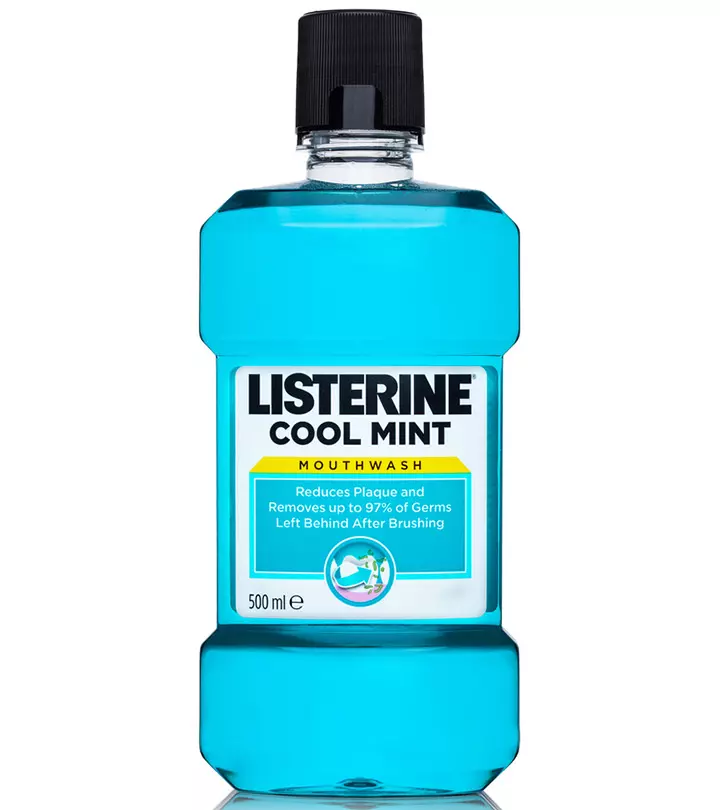
Community Experiences
Join the conversation and become a part of our empowering community! Share your stories, experiences, and insights to connect with other beauty, lifestyle, and health enthusiasts.